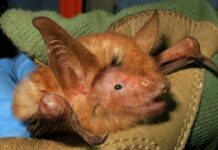A 55-year-old resident of Hubei, China, may have been the first registered case of the novel coronavirus infection. The record dates to one year ago today, on the 17th of November 2019, according to Chinese official data revealed by The South China Morning Post.
But the search for “patient zero” is far from over. Without molecular and genetic evidence, there is no telling exactly how the virus has spread from one individual to over 55 million people in about one year.
Molecular biologists and epidemiologists are still looking for the common ancestor, that is, the progenitor genome sequence that gave rise to the pandemic. So far, investigators have shed some light on how SARS-CoV2 may have jumped from animals to humans, where that jump happened, and how long ago.
On the last day of 2019, the Wuhan Health Commission reported 27 patients with a pneumonia-like disease. The outbreak was declared a Public Health Concern in January 2020 and a pandemic in March 2020 by WHO.





